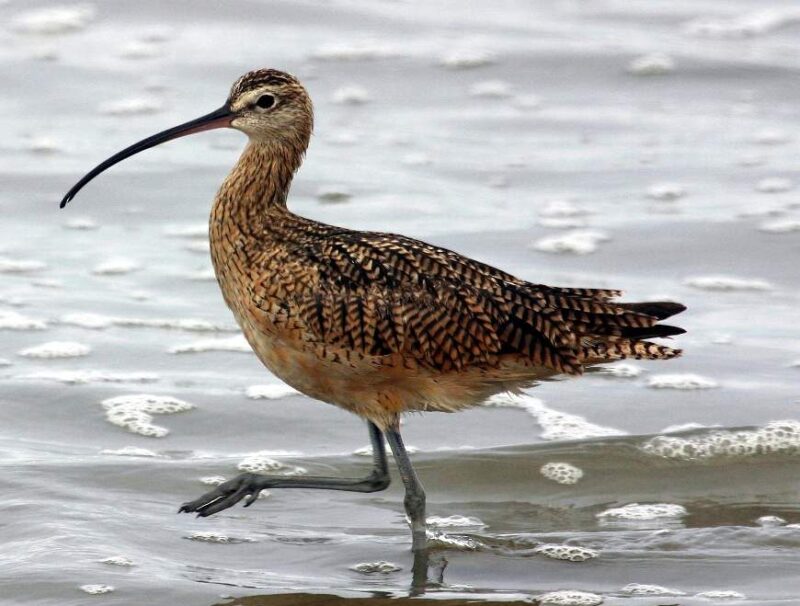Donegal people are being urged to take part in World Curlew Day today in honour of one of our most important birds.
The annual event aims to raise awareness for this unique and beautiful bird that plays a significant role in Ireland’s heritage.
Curlew (Numenius arquata) – An Crotach in Irish- is represented in place names, storytelling, poetry, music, coinage and folklore.
They are a large wader with greyish brown colouring with dark streaking standing tall on long bluish legs with a majestic long down curved bill. Their charismatic call is evocative and easily recognisable, according to the Curlew Conservation Programme.
If you see or hear Curlew on the hills/bogs in Donegal during the summer months, can you please report it to this email address: agri.ecology@npws.gov.ie
Concerns have been growing about the Curlew’s survival – in the late 1980s, between 3,300 and 5,500 pairs were estimated to have been breeding in Ireland. Today, however, that number is believed to be no more than 130. This represents a decline of at least 96 per cent.
This decline is due to multifaceted pressures such as changing land use and agricultural practices, afforestation, land fragmentation, industrial peat harvesting and a decline in invertebrates and predation. Curlews are currently Red-listed in Ireland and are also considered globally threatened, making them one of our country’s highest conservation priorities.
It is worth noting that while large numbers of Curlew are present during the Irish winter, the majority of these birds do not breed in Ireland. These visitors come from the UK, Scandinavia and continental Europe to take advantage of our mild winter weather, feeding on coastal mudflats and wetlands. They return to their overseas breeding grounds come spring.
Curlew nest in damp rushy pastures and on open moorland. Using their long, down-curved bills they probe for food in soft, wet areas along ditches or shallow pools where their chicks can easily find insects to eat.
When disturbed near a nest site, Curlew will remain in the area and fly (typically in circles) above the ‘intruder’ while giving loud alarm calls.
The usual clutch size is four and the eggs take around 27 – 29 days to hatch. When the young hatch they can forage for themselves and move away from the nest within a few hours often covering large distances. They fledge after 32 – 38 days.
If you see or hear Curlew on the hills/bogs in Donegal during the summer months, can you please report it to this email address: agri.ecology@npws.gov.ie
Tags:








